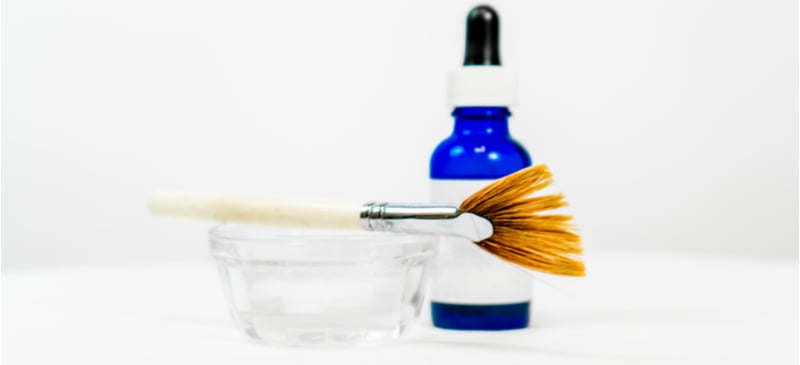This Dr. Axe content is medically reviewed or fact checked to ensure factually accurate information.
With strict editorial sourcing guidelines, we only link to academic research institutions, reputable media sites and, when research is available, medically peer-reviewed studies. Note that the numbers in parentheses (1, 2, etc.) are clickable links to these studies.
The information in our articles is NOT intended to replace a one-on-one relationship with a qualified health care professional and is not intended as medical advice.
This article is based on scientific evidence, written by experts and fact checked by our trained editorial staff. Note that the numbers in parentheses (1, 2, etc.) are clickable links to medically peer-reviewed studies.
Our team includes licensed nutritionists and dietitians, certified health education specialists, as well as certified strength and conditioning specialists, personal trainers and corrective exercise specialists. Our team aims to be not only thorough with its research, but also objective and unbiased.
The information in our articles is NOT intended to replace a one-on-one relationship with a qualified health care professional and is not intended as medical advice.
Salicylic Acid for Acne, Rough Skin, Dandruff & Warts
December 19, 2023

Salicylic acid is at the top of many dermatologists’ lists of acne-fighting ingredients. Why? It helps dry up zits naturally and can also keep them from returning, while improving skin’s texture.
Beyond serving as a natural acne remedy, this plant-derived ingredient has been shown to have anti-inflammatory, exfoliant and mild antibacterial effects, making it a well-rounded ingredient to add to your natural skin care routine.
What Is Salicylic Acid?
What is salicylic acid made of? It’s technically a type of phenolic acid and beta hydroxy acid. It’s one acid in the group of compounds called salicylates.
When used in creams, acne treatments and other products, it’s derived from the willow bark tree, a plant that has a number of skin-soothing effects. It’s actually in the same class of drugs as aspirin (another salicylate), although it’s used differently. It appears as a colorless, odorless, crystalline organic acid.
Salicylic acid’s structure allows for it to be oil-soluble, meaning it can penetrate through the oily, lipid layers of the skin. It’s considered a keratolytic agent, as it’s able to enter pores and clear up bacteria and oil that can lead to clogged pores, blackheads and breakouts.
It can even break tiny connections between skin cells, acting a natural exfoliant that removes dead cells, leaving the surface of the skin smoother.
What does salicylic acid do for your skin? Salicylic acid uses include:
- Clearing up acne-prone skin and preventing future breakouts
- Reducing blackheads and whiteheads
- Helping exfoliate the skin
- Decreasing dandruff and seborrheic dermatitis
- Fighting warts, calluses and corns
- Treating skin conditions that involve scaling or overgrowth of skin cells, such as psoriasis and ichthyosis
Benefits
1. Unclogs Pores to Reduce Acne
Although it’s not always the best choice for people with sensitive or overly dry skin, salicylic acid can help get rid of pimples — including potentially clearing up inflamed, red and painful pimples. The primary way that it helps clear skin relatively quickly is by reducing oil, clogged pores and swelling.
As a result — alongside other ingredients like mandelic acid, tretinoin, azelaic acid and alpha hydroxy acid — salicylic acid can be an effective acne remedy.
What about benzoyl peroxide? How does it compare? Available in face washes, spot treatments, masks and creams, benzoyl peroxide helps kill acne-causing bacteria within the skin that can lead to small infections and blemishes. It has stronger antibacterial effects, but salicylic acid works best for exfoliating and clearing blackheads and whiteheads — and does not dry out the skin as much as benzoyl peroxide.
2. Has Exfoliating, Smoothing Effects
While some other ingredients like bakuchiol may be better at killing bacteria that leads to acne and other skin issues, salicylic acid is one of the best at removing dead skin cells and smoothing skin.
As a type of keratolytic medication, it has the ability to improve skin’s texture by exfoliating both the inner and outer layers of the skin, reducing unevenness and encouraging skin cell turnover.
3. Can Help Reduce Dandruff
While most people associate this ingredient with skincare, it can also be used to improve the health of your scalp and hair. You can find salicylic acid shampoos in drug stores that are recommended for people with dandruff and seborrheic dermatitis (which causes an itchy, scaly scalp).
Studies have demonstrated that shampoos with salicylic acid are effective against seborrheic dermatitis. It helps reduce dandruff by exfoliating the scalp and removing dead skin cells.
4. May Help Treat Warts
When applied as a cream or ointment (often found in strips that are applied like Band-Aids), salicylic acid can help remove warts by exfoliating the skin and promoting growth of normal, healthy skin cells.
For example, in one study, salicylic acid and cryotherapy were compared regarding how well they treated plantar warts. After 12 weeks, both treatments demonstrated complete success.
Risks and Side Effects
Why might salicylic acid be bad for certain skin types? If you have sensitive skin that is prone to dryness or redness, this may not be the best ingredient for you, especially when use frequently.
It’s possible for salicylic acid to cause side effects (especially when first beginning to use it), including irritation, dryness, itching, peeling and redness, particularly when overused or used on large amounts of the skin.
Because it can seep through the skin and be absorbed into the bloodstream, it should be avoided by women who are pregnant and anyone who takes blood-thinning medications.
It should also not be applied to the inside of the mouth, eyes, broken skin/cuts, or moles, birthmarks, warts with hair growing from them or genital/anal warts.
Products
There are now a variety of salicylic acid products available in drug stores, department stores and even by prescription. These include:
- Acne face washes and cleansers, which are often intended for daily use. Some dermatologists recommend looking for facial products that contain a mix of different salicylic acids to experience the best results.
- Acne “spot treatments,” which are ointments or creams that are applied to existing zits or blemishes that are forming. Look for products with about 2 percent of the ingredient, a strength that is effective without overdoing it.
- Body washes, which can treat acne on the back, chest, etc.
- Salicylic acid shampoo, used to reduce scalp dandruff.
- Wipes, pads and patches that are applied to the skin or scalp.
How to Use
Most products meant for use on your face are available over-the-counter in concentrations of about 0.5 percent to 2 percent salicylic acid. Dermatologists also offer treatments such as salicylic acid peels that use much higher doses, up to 20 percent to 30 percent, but these treatments are not meant for regular use and are only performed if your doctor thinks they will be safe and effective.
For treating warts on thicker skin, concentrations range from 17 percent to 40 percent. This concentration needs to be used with caution, as side effects are possible.
If you’re using this ingredient to remove warts, read directions carefully. Often the bandages will be applied about every 48 hours for several weeks. (It may take as long as 12 weeks for a wart to go away.)
You can also treat a wart by soaking it for 10 to 15 minutes in the bath, then using an emery board or pumice stone to exfoliate the skin, then applying salicylic acid gel/cream once or twice a day, for several weeks until it goes away.
Is it OK to use salicylic acid every day?
Depending on your skin type and condition, topical salicylic acid may be used as often as several times a day or as infrequently as several times a week. If you don’t have sensitive skin and only apply a small amount daily, ideally along with a moisturizer, you may be able to tolerate daily use.
However, if you notice your skin becoming dry and irritated, back off for several weeks.
It may take several weeks or longer for you to feel the full benefit of these products.
It’s best to use small amounts of this product at first and then gradually more as your skin adjusts. If applying twice daily, be sure to use a gentle cleanser and to moisturize your skin often, which helps prevent too much dryness and peeling.
It’s best to apply this ingredient to acne-prone areas of your skin, rather than large patches of skin. This helps prevent you from absorbing too much.
Conclusion
- What is salicylic acid? It’s a type of phenolic acid and beta hydroxy acid that is derived from the willow bark tree. It has anti-inflammatory, exfoliant and antibacterial properties.
- Salicylic acid uses for skin and hair include reducing acne blemishes, preventing blackheads and whiteheads from causing breakouts, exfoliating the skin, reducing inflammation and uneven skin tone, and decreasing dandruff.
- A number of salicylic acid products are available over-the-counter and by prescription, depending on your skin type and goals. For example, face washes, gels and creams may be used to fight acne, while salicylic acid shampoo can be used to treat dandruff.




